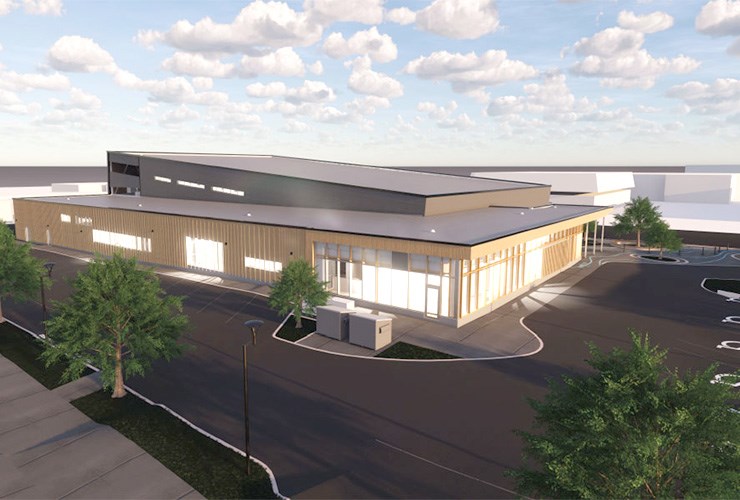On Friday the federal and provincial governments announced $10 million in funding to support construction of the new pool downtown.
The funding was part of $65.3 million in federal and provincial funding for 24 infrastructure projects in northern B.C.
"It's fantastic news. It's the largest grant the city has received in a decade," Mayor Lyn Hall said. "The pool really is one of the major projects downtown. It was one piece of the puzzle to attract people downtown."
Excavation of the pool site on Seventh Avenue, between Dominion and Quebec Streets, is slated to begin by the end of the month. Once complete, the new aquatics centre will replace the aging Four Seasons Leisure Pool.
The 38,600 square-foot aquatics centre will include a six-lane, 25-metre lap pool; four-lane, 25-metre teaching pool; leisure pool with a lazy river, beach entry and play features; a large waterslide; sauna and steam room; large universal change room; and rooms for lessons and training.
The city's plan to heat the pool using the Downtown Renewable Energy System was a key part of attracting the federal and provincial funding, Hall said. The city projects using renewable energy to heat the pool will reduce greenhouse gas emissions by 95 per cent compared to heating it with natural gas.
The total project cost is budgeted at $42 million – $35 million for the pool design and build, and $7 million for the purchase and clearing of the site. Prince George voters authorized the city to borrow $35 million for the project during a 2017 referendum.
"Council has an opportunity over the next couple weeks or month to decide how best to use the $10 million," Hall said.
ANCIENT FOREST GET FUNDING
The Lheidli T'enneh First Nation was one of the other 23 groups to receive federal and provincial funding on Friday. The Lheidli T'enneh received $7.8 million towards the Ancient Forest/Chun T'oh Whudujut Enhancement Project.
The project calls for the development of additional recreation facilities and amenities in Ancient Forest/Chun T’oh Whudujut Provincial Park, located approximately 115 kilometres east of Prince George. The project includes the development of new riparian wetland hiking trails, an interpretive centre, sweat lodge, pit house, gazebo and improved accessible amenities such as boardwalks, pathways, washrooms, access roads, parking and signage.
“Investing in community, recreation and cultural infrastructure promotes people’s health and well-being and builds strong dynamic communities where people want to put down roots and do business,” B.C. MP Patrick Weiler said in a press release. “These... will support local economies now, and bring residents new facilities and amenities that will make a real difference in people’s lives for years to come.”
A spokesperson for the Lheidli T'enneh could not be reached for comment as of press time.
Some of the other projects that received funding on Friday include a Saik’uz First Nations cultural centre in Vanderhoof, upgrades to the ice plants at community centres in Valemount and McBride, construction of a new community centre for the Salteau First NationSalteau First Nation, a festival plaza in Fort St. John and upgrades to the wastewater treatment plant in Granisle.
“I am pleased to join with the federal government to invest in people and their communities,” Minister of Municipal Affairs and Housing Selina Robinson said in a press release. “We know that these investments in public spaces, in all regions of the province, will strengthen relationships and promote mental and physical well-being. Working with local governments, Indigenous communities and other partners means that we can continue to deliver the services people count on and need right here in British Columbia.”



